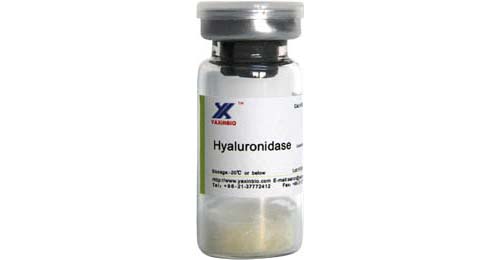Hyaluronidase is an enzyme that causes the breakdown of hyaluronic acid. In the medical arena, it is used to increase absorption of fluids or medicines injected into your skin. However, in the past years, hyaluronidase has found a place in cosmetic medicine. “In a sense, some patients consider hyaluronidase as an antidote,” says Dr. Miriam Hanson, board-certified Cosmetic Dermatologist. “Specifically in patients who have had dermal fillers and may have some concerns. They want to know when hyaluronidase can be used in the skin.”
 Some commonly used dermal fillers such as Juvederm, Restylane, and Belotero are popular and injected by many dermatologists to treat the effects of aging. Dermal fillers are used to rejuvenate the face and other areas of the body as well. They work to augment soft tissue and add volume in areas of collagen loss. Many of these fillers are hyaluronic acid-based products that are injected just under the surface of the skin.
Some commonly used dermal fillers such as Juvederm, Restylane, and Belotero are popular and injected by many dermatologists to treat the effects of aging. Dermal fillers are used to rejuvenate the face and other areas of the body as well. They work to augment soft tissue and add volume in areas of collagen loss. Many of these fillers are hyaluronic acid-based products that are injected just under the surface of the skin.
Most patients are satisfied with the aesthetically pleasing result from their dermal fillers. However, sometimes a patient will have an adverse reaction to the dermal filler. Swelling or pain at the injection site, or perhaps the formation of nodules may occur. A bluish discoloration may also appear. These issues are occasionally caused by improper injection techniques or if the injection is too superficially applied.
Hyaluronidase disrupts the process and reverses the effects of the hyaluronic acid-based filler. “It dissolves the filler placed incorrectly, unevenly or excessively that looks strange look for the patient,” explains Dr. Hanson. A skin test may be performed to check for an allergy to some types of hyaluronidase before application.
It is injected by a dermatologist with minimal discomfort. There are no permanent problems or visible effects from the use of the hyaluronidase. The skin will return to the pre-filler correction state, and smooth down any bumps that have formed.
Patients may need a follow-up to ensure the right amount of hyaluronidase is used to correct the problem, and if a touch up is required. Once corrected, many patients choose to return for a dermal filler without any adverse reactions.
Dr. Hanson treats dermatology patients and provides aesthetic skin treatments at Sanova Dermatology in Austin, Texas
Contact Us
For more information or to talk to someone about any concerns or questions you may have about dermal fillers, please contact us.
Join Us

